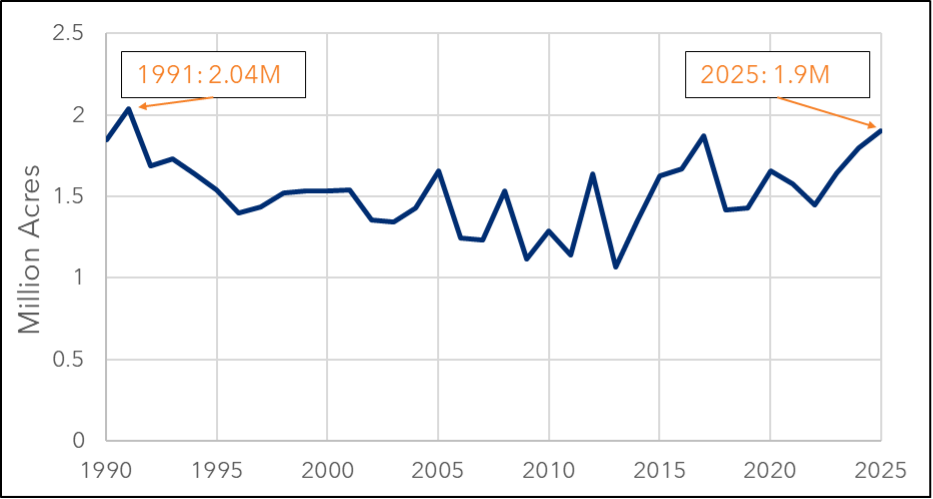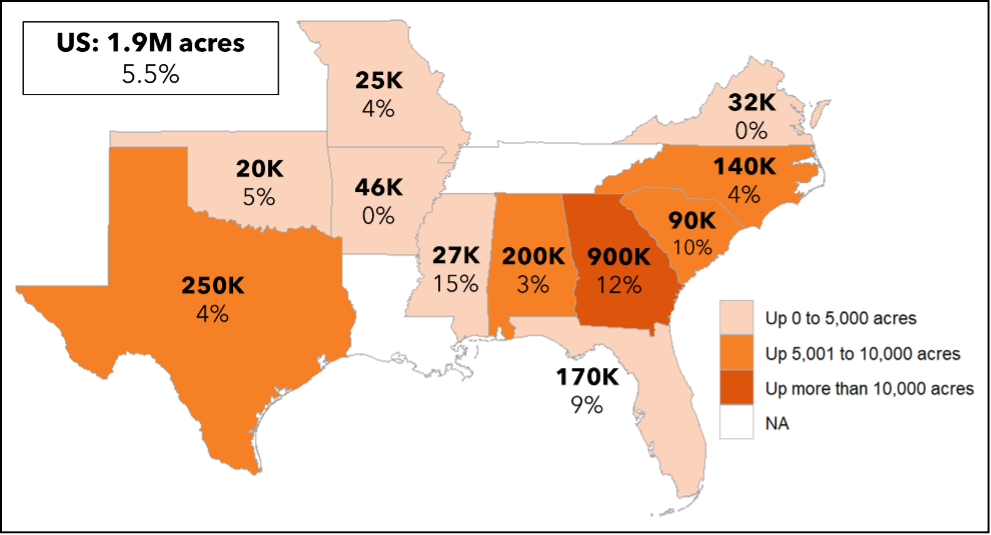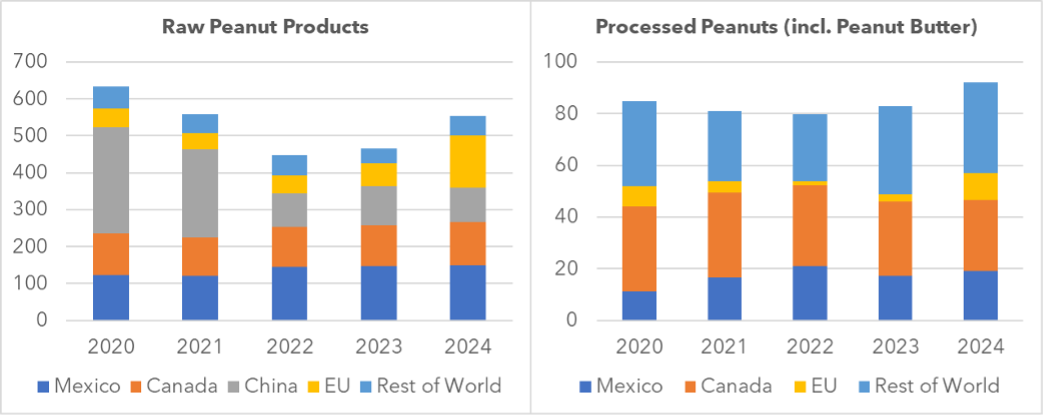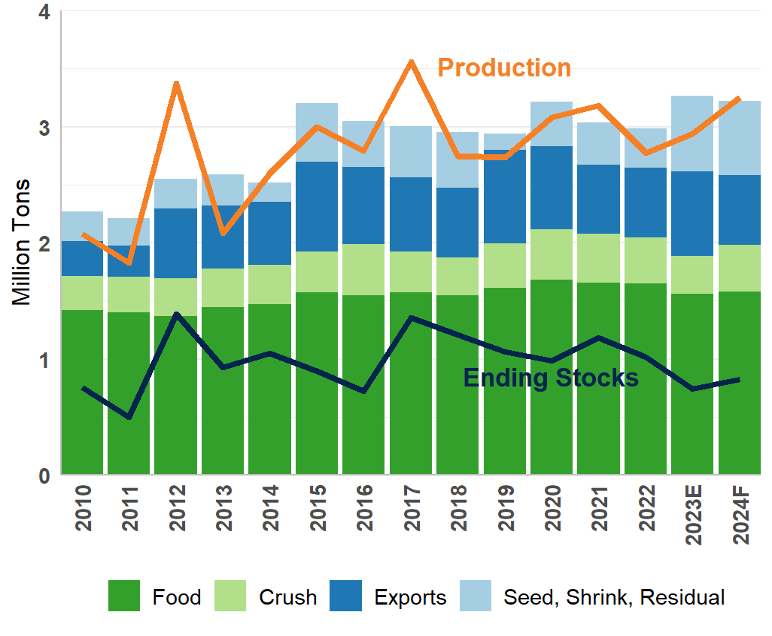The USDA released the latest World Agricultural Supply and Demand Estimates (WASDE) on September 12th. Last month’s report introduced the first yield estimates of the year for various crops, and this month’s report updates those yield estimates while adjusting planted and harvested acreage estimates given data from the USDA Farm Service Agency (FSA) certified acres. The September report did not show drastic changes, as corn production is still expected to set a new record, in part due to increased production in southern states.
The record corn production forecast in the last report is projected to increase slightly to 16.8 billion bu. This increase in corn production is due to estimated planted acres increasing to 98.7 million acres, up 1.4 million acres from the August estimate. The production increase comes despite the corn yield forecast decreasing 2.1 bu. per acre from last month’s forecast to 186.7 bu. per acre. This decrease in the national corn yield forecast was driven by 1-3 bu. per acre reductions in several major-producing Midwest states, including Iowa, Illinois, Minnesota, Nebraska, North Dakota, and South Dakota.
Figure 1: 2025 Forecast Corn Production by State (Change from 2024 in parentheses), million bushels

Overall, 1.95 billion more corn bushels are expected to be harvested compared to last year. One quarter of this new production (489 million bu.) comes from Southern states (Figure 1). Mississippi is expected to have the largest increase at 70 million bu., followed by North Carolina at 60 million bu., and Louisiana at 59 million bu. Texas and Kentucky remain the largest corn producers in the region, at 250.1 million bu. and 248.5 million bu., respectively.
Other crops saw small changes in this month’s report. Cotton had minor changes in production and use forecasts relative to August, leading to no change in ending stocks, and the forecast price remains at 64.0 cents per lb. Soybean ending stocks for 2025/26 are forecast to increase by 10 million bushels, resulting in a $0.10 price decline to $10.00 per bu. Sorghum and wheat both saw no changes to the projected price for this marketing year.
References
Maples, Will. “USDA Projects Largest Corn Supply in History.” Southern Ag Today 5(33.3). August 13, 2025. Available at: http://southernagtoday.org/may-wasde-projects-higher-supplies-and-lower-prices-again-in-2024/
USDA-NASS. World Agricultural Supply and Demand Estimates. September 12, 2025. Available at: https://www.usda.gov/oce/commodity/wasde/wasde0925.pdf
USDA-NASS. Crop Production. September 12, 2025. Available at: https://downloads.usda.library.cornell.edu/usda-esmis/files/tm70mv177/sx61gm45w/gb19h565z/crop0925.pdf
Sawadgo, Wendiam. “Major Increase in Corn Production Expected Across the South.” Southern Ag Today 5(38.3). September 17, 2025. Permalink









